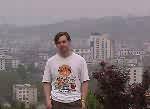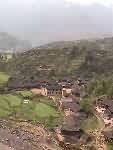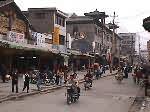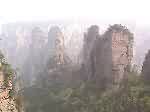- Getting around Lijiang. Dont stay in the Old Towns more than 2 days, there is nothing to do. KRISS Oct 9, 2013 05:46
- 2013 Beijing Temple Fair BENNYLAU Feb 26, 2013 03:29
- Malaysian traveling from KUL - LAX vis Shanghai PVG ZATI_DY Jan 3, 2013 20:15
My Sassy Guide
- Views: 3752
- |Vote: 1 0
- |Add to Favorites
- |Recommend to Friends
Cities
They say there’s something for every traveller in China – there should be, the country’s more than big enough for an uncommonly varied collection of locales. There’re mountains for the climbers, temples for those who like quiet ethnic places full of bald men in frocks, and everything else you could possibly want in a place that’s as ancient as Babylon and as modern as Toronto. Myself, I have to make a confession: I prefer cities. I’m supposed to be something of a liberal, and people like me are theoretically meant to be attracted to the great outdoors, the simpler and more natural attractions: the sprawling fields, the great oceanic lakes, the endless forests… cities are for hard-nosed realists who see progress in great ugly towers of glass and stay in posh hotels when they go abroad. But I’ve always loved them, for to me, cities are like great novels or huge, messy artistic projects. I love the way each part of a city is a person, each life knitted to everyone else’s by the buildings and streets they pass through every day.
I say this in order to explain my feelings for one of China’s most spectacular outdoor attractions, the great wilderness preserve of Zhangjiajie. Located in Northern Hunan, the park is best known for its impossible topography: great straight-edged columns of rock the size of mountains, stretching out in endless rows, like pillars supporting the sky itself. It’s the only place on Earth quite like it, and it is one of the most staggering natural wonders that China has to offer. It’s a little out of the way, though, and most standard tour itineraries can’t comfortably squeeze it in, so a traveller should consider oneself lucky to have the chance to see it if at all possible. At least, that is what I told myself when I got my opportunity – an otherwise obnoxious student of a friend was generous enough to offer to take me there, and I accepted eagerly. Despite this, I felt a hesitation unbecoming of a true traveller. Maybe it was those uncomfortable muddy bush tramps I was forced to go on when I was little: the thought of spending a couple of days lost in a national park looking at rock after rock didn’t seem quite as appealing as the daily feasts of local hotpot I was becoming used to in Hunan.
I have to be honest: when I travel, I usually look at cities more than anything else, and I love watching people more than I enjoy looking at sunsets over mountain valleys. Cities in China are on a more human scale than I have ever found in my own country. Despite the fact that Chinese cities are often overcrowded, and that many are run down, polluted or underdeveloped, the sensation I get of membership in a collective project of no little effort is something I have come to identify with living and travelling in China. Scenery watching has always seemed to me to be something a little shallower.
Rural Hunan
The other problem, as I mentioned, was that the student who’d offered to take me was someone I couldn’t stand. She was the kind of person who had an inherent and unconditional dislike for foreigners, and was only offering to escort me to Zhangjiajie because it was her home town and she thought it would bring her face. Her ‘face’ was more important to her than her distrust of Lao Wai, and so she was prepared to put up with me for the admiration she’d receive from the people she knew that her English was good enough to act as a tour guide (which to be totally honest, it wasn’t).
I sat away from her on the train – I was tired of listening to her constant stream of complaints about me, and wanted to watch the passing Hunanese countryside alone. Hunan’s rural heartland is unspeakably beautiful, all mountains and plains, and not an inch that hasn’t been tamed by human hand. Slopes have been chiselled into terraces of rice paddies over hundreds of years, and the train passes high above valleys cut into cultivated squares of varying shades of green, lime and olive and emerald. Towns are everywhere, collections of wooden homes grey-blue in the distance. The train stopped often at remote stations, young men and women shifting from platform to platform wore beautiful lost faces older than their years. Hunan is one of the most populated provinces in China, but from the train window it was all wide open spaces, sparkling rivers of unparalleled clarity, pure unpolluted countryside. Within a few hours we were coming up to Zhangjiajie proper, and I started to recognise the constriction of homes into tighter knots that signalled the outer reaches of a city, and I began to feel more in my element. My detached awe at the spectacle of Hunan’s countryside was becoming an acute curiosity and interest in exploring Zhangjiajie city.
The New Face of Dayong
The city itself wasn’t called Zhangjiajie until after the locals realised their parklands were of international interest. When it became clear what this would mean for their city, they applied to have the name changed from Dayong to Zhangjiajie after the name of the park, and this was granted in 1994. Now, everyone in China dreams of visiting Zhangjiajie, and old Dayong city has grown from a minor Hunanese town to a major tourism hub. The park itself is an hour away by van, but the city has stylised itself as a place worth visiting in its own right, a move that has generated a lot of income for the town from the tourists who prefer to stay away from the relatively remote park area.
I loved the look of Zhangjiajie. Hunan’s towns are all charmingly laid out in brick and dark green leaves and puddles, and Zhangjiajie fits the mould – but is far more atmospheric in that it is an industrious and developing place. Citizens at all levels had purpose in their eyes, and the new white-tiled blocks seemed to be poised respectfully above the city with an air of congratulations. Not far from the train station is an attractive modern pagoda overlooking the whole city, and the memorial lookout on the next mount along gives a complete vista of metropolitan Zhangjiajie. I wanted to stay, but my unpleasant guide was pushing me towards the minivans, and we set off before I’d had my chance to get to know the city better.
Zhangjiajie
An hour of excruciatingly bad company later, I arrived at the park gates. Before the gate is a short crescent-shaped road along which are set a few averagely expensive hotels. My guide took me to one that was owned by a friend of hers – she got free accommodation but told the hotelier to make me pay as much as possible. At least by being in a separate room I felt momentarily free, until she insisted I treat her to dinner as my thanks to her for bringing me here. For a short Hunanese girl, she had an amazing appetite.
We finally got to the park itself in the morning. As a Zhangjiajie resident, my guide didn’t have to pay, but I was charged the full hundred yuan – a price I’ve heard tell has since doubled. I was pleased to be in the fresh air, however, and as we walked towards the wide lawns from where visitors can select to climb one of the pinnacles or follow the stream through the forests, I admired the woods and fresh, irregular scenery. Trees grew thick and close, and my guidebook told me that there are three times more varieties of tree in this park than there is in the whole of Europe. There are also many species of wild animal, the first of which I noticed were the monkeys which had gathered at the roadsides to beg for peanuts – one lady had set up a stall selling them to tourists. I bought a bag to give my guide something to feed them with, but she ate them herself instead.
The great sky pillars were as incredible as I’d read, and what struck me most was the way they seemed have leapt from out of the ground taking the trees with them – the forest seemed to have given way to these incongruous and sudden cliff faces, and on the upper shelves the trees grew out from the top as if they’d been lifted there and were indifferent to the fact they were now growing kilometres high. I wanted to climb one, but my guide wanted to encourage me to use the chairlift. I refused, and we began the two-hour ascent on foot. I figured we were doing well, when to my total surprise, my guide, halfway to the top, said she was sick of it, turned around and started to make her way back down. I never saw her again.
If you’ve ever thought you had a bad tour guide – imagine if you were abandoned halfway up a mountain by one. I should have been furious, but I was actually delighted. I continued my climb with a bounce in my step, and must have got to the top in record time. All the while I was watching the spectacle around me – as the spires break through the lower layers of cloud, the trees seem shrouded in mist and the view is astonishing. When I was at the top, I avoided the entreaties to make purchases from the fake temple that had been built there – selling the same plastic keyrings I’d been asked to buy by the merchants who’d placed themselves at two-minute intervals on the path up. Instead I walked to the edge and looked across the forest plains with their strange shards of mountain like chesspieces of the gods. I had to admit being impressed, and stood happily for a moment, grateful I’d had this one chance to see this place.
It was momentary. I considered climbing another – guidebooks claim you should try to take a week to explore the park – and then realised that they were all probably variations on what I’d already seen. Instead, I hurried back down and out to get the quickest minivan I could find to take me back out to Zhangjiajie city, where I could see more of the real China: where this 5000 year old country is still a work in progress, still being made every day.







 Copyright © 1998-2024 All rights reserved.
Copyright © 1998-2024 All rights reserved.
1.
Jun 18, 2014 15:24 Reply
Mr.TROY from USA said:
Your writing and descriptions are excellent. Its too bad you ruined the entire story by bad mouthing your guides/locals. While I'm sure everything you say is true, the story would have been accepted much better had you left that part out of the review.
2.
May 20, 2012 00:45 Reply
Ms.MELODY said:
Zhangjiajie is really an amazing place. Welcome you back to Zjj with a nicer guide. According to my working experience and my tourists' opinions, the best time to come is April. Fine weather and not crowding as other months.
3.
Sep 24, 2005 22:56 Reply
MISHEN said:
Sounds like your Sassy Guide was far worse than mine - but not totally uncommon in China - so many little tourist agencies cheat their customers. I didn't mind this guide so much - and I am glad she ate the monkey's peanuts.
4.
Sep 24, 2005 21:37 Reply
CHENLI said:
We met a very sassy guide and driver
on our way to Jiuzhaigou this summer.
They asked us to take part in a Zang
evening party and pay extra Rmb 300 for everyone. We refused. The guide and the driver got mad and said very bad words to us, then left us in a desolate place
and stopped us calling the travel agencyvery rudely.
As a Chniese, I feel very shameful for that.
5.
Sep 16, 2005 03:20 Reply
RITA said:
:)